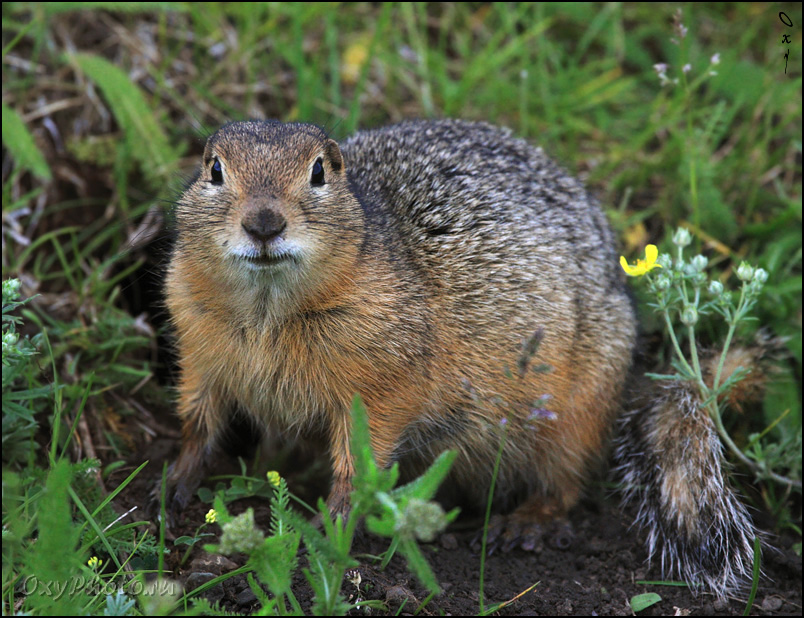
Long-tailed ground squirrel, or Eversmann's souslik (Citellus undulates, or Spermophilus undulatus)
Phylum — chordata
Class — mammalia
Order — rodentia
Family — sciuridae
Genus – citellus
Appearance
The Long-tailed ground squirrel has a compact, low-slung body, short legs and a long bushy tail. The body length reaches up to 315 millimeters (12.4 in) and the tail 160 millimeters (6.3 in). The back is brown with a linear pattern of dark, small spots. The underparts are a paler ochre-brown with a reddish tinge along the side. The tail is barred in brown and black with a prominent light edge stripe and a pale tip.
Habitat
It is found in China, Kazakhstan, Mongolia, and Russia.
Behavior
The Long-tailed ground squirrel lives in colonies with a labyrinth of burrows. In light sandy soils these are up to 3 meters (9.8 ft) deep with a single entrance hole surrounded by a large mound of soil up to 2 meters (6.6 ft) in diameter. The underground passages extend up to 15 meters (49 ft). In heavier clay soils, the holes are about 2 meters (6.6 ft) deep, stretch 5–7 meters (16–23 ft) and have several entrances.
The animals awake from hibernation in March. Activity is concentrated in the early morning and then again in the afternoon and evening, the animals retiring to their burrows in the middle of the day.
Diet
The diet consists of green vegetation, seeds, insects, bulbs and roots.
Reproduction
The young are born about a month later. There are usually five to eight young in a brood.
In captivity
In captivity, Long-tailed ground squirrels live up to 3 years.
Long-tailed ground squirrels can be kept at home. A medium-sized cage is suitable for keeping one animal. For a couple – a male and a female, an aviary of at least 1x1 m is being built on a high concrete foundation. Inside the aviaries, shelters are placed (houses, boxes, pieces of pipes, etc.), blocks for sharpening incisors, drinking bowls with fresh water. The bedding is changed regularly. By September, animals are given a lot of material for bedding-straw, leaves. After falling into hibernation, the cells are covered with a thick layer of the same materials. During hibernation, animals are kept one at a time.
Food at home does not have any difficulties: a mixture of grains of cultivated and wild cereals, rhizomes of field plants, vegetables and fruits, green branches of soft trees. They willingly eat oats, sunflowers, grains of cultivated cereals mature and in the stage of milky-waxy ripeness, granulated feed, bread, beets, carrots, mealworms, herbs.
 Russian
Russian
 English
English


















